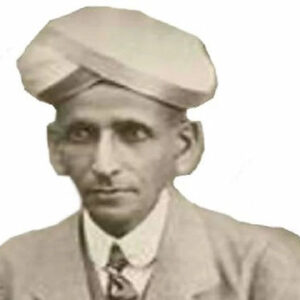Sir Mokshagundam Visvesvaraya, also known as M. Visvesvaraya, was a man of lofty ethics and discipline who was one of India’s most distinguished engineers. He was the principal architect behind the construction of the Krishna Raja Sagara dam in Mandya, which assisted in the conversion of the surrounding barren areas into productive farming grounds. He was an optimist who believed in living simply and thinking deeply. His father was a Sanskrit scholar who believed in giving his kid with a high-quality education. Even though his parents were not wealthy, the little boy was raised in an environment rich in culture and tradition. When Visvesvaraya’s father died when he was only a teenager, tragedy rocked the beloved family. He struggled to get forward in life after the death of his beloved father. He was poor as a student and supported himself by instructing younger children. He became an engineer as a result of his hard work and devotion, and went on to play a key part in the design of Hyderabad’s flood control system. For his tireless efforts to the country, he received various accolades and honors.
Childhood and Adolescence
Visvesvaraya was born in a village near Bangalore, India, to a Telugu Brahmin family. His father was a well-known Sanskrit scholar during his lifetime. His parents were straightforward but ethical individuals.
Despite the fact that his family was not wealthy, his parents desired for their son to receive a solid education. He went to high school in Bangalore after finishing his elementary education at his hometown school.
His father died when he was 15 years old, leaving his family penniless. Visvesvaraya began giving tuition to tiny children in order to pursue his schooling and support himself.
He enrolled at Bangalore’s Central College and worked hard. Despite his challenges, he was a good student and graduated with a Bachelor of Arts in 1881.
After receiving government assistance, he attended the famous College of Engineering in Pune.
Career of M. Visvesvaraya
He secured a job as an Assistant Engineer with the Mumbai Public Works Department (PWD) after graduating in 1884. He worked in Nasik, Khandesh, and Pune throughout his time there.
He then joined the Indian Irrigation Commission, where he assisted in the implementation of a sophisticated irrigation system in the Deccan region. During this time, he was instructed to devise a system of supplying water from the Sindhu River to Sukkur, a tiny town.
In 1895, he developed and built the waterworks for the Municipality of Sukkur. He is credited with inventing the Block System, which prevents water from flowing wastefully in dams.
In 1906-07, the Government of India ordered him to Aden to evaluate the water supply and drainage system since his work had become so popular. He did so, and based on his research, he created a project that was implemented in Aden.
The port of Visakhapatnam was at risk of being eroded by the sea. Visvesvaraya, with his superior mind and ability, devised a viable solution to the problem.
During the first decade of the twentieth century, floods threatened Hyderabad. In 1909, the brilliant engineer once again supervised the engineering work at Hyderabad, this time as a Special Consulting Engineer.
In 1909, he was named Chief Engineer of the state of Mysore, and in 1912, he was named Diwan of the princely state of Mysore, a position he maintained for seven years. He made a significant contribution to the state’s overall development as the Diwan.
In 1917, he assisted in the establishment of the Government Engineering College in Bangalore, which was eventually renamed the Visvesvaraya College of Engineering after him.
In 1924, he was the chief engineer for the construction of the Krishna Raja Sagara Lake and dam in Mandya district, near Mysore, Karnataka, which spans the river Kaveri.
Major Projects of M. Visvesvaraya
In 1924, he was crucial in the construction of the Krishna Raja Sagara Lake and dam, which is still remembered today. This dam became not only the primary source of water for irrigation in the surrounding areas, but also the primary source of drinking water for a number of cities.
Achievements & Awards
In 1915, the British knighted Visvesvaraya as Commander of the Order of the Indian Empire (KCIE) for his contributions to society.
In 1955, he was awarded the Bharat Ratna, India’s highest civilian accolade, for his tireless efforts in the fields of engineering and education.
He has received honorary doctorates from eight different Indian universities.
Personal History and Legacy
Visvesvaraya was a guy of values and beliefs. He was a trustworthy individual who gave his all to his job and country. Even when he was well into his 90s, he loved hygiene and was immaculately dressed.
This brilliant Indian engineer lived a long and fruitful life, dying at the ripe old age of 102 on April 14, 1962.
A statue was erected in his honor at his alma mater, the College of Engineering in Pune.
His name is commemorated at the Visvesvaraya Industrial and Technological Museum in Bangalore.


